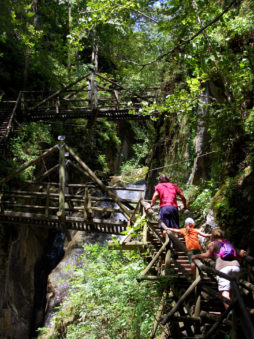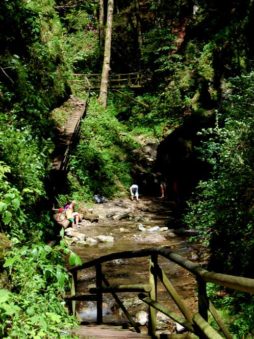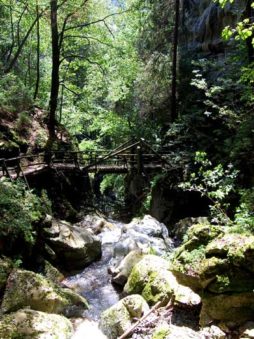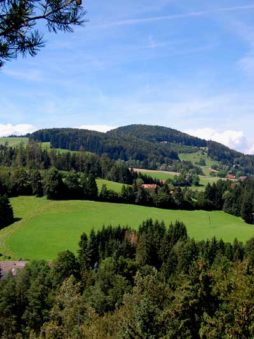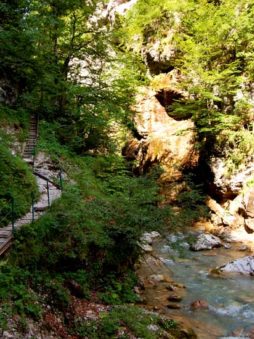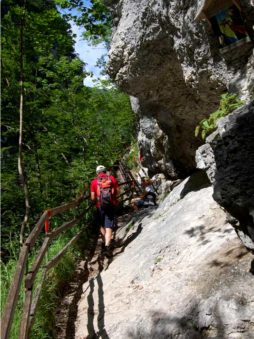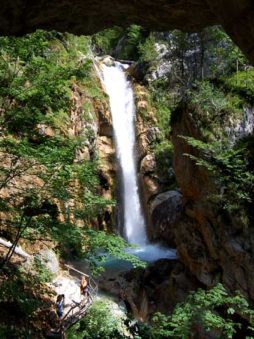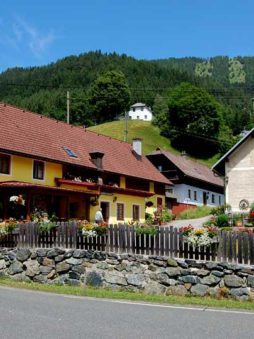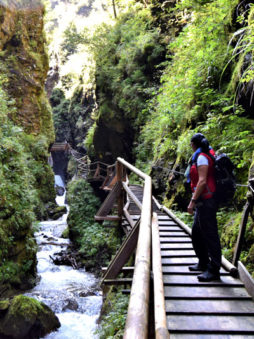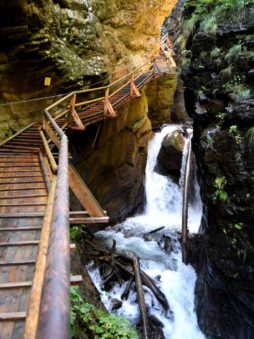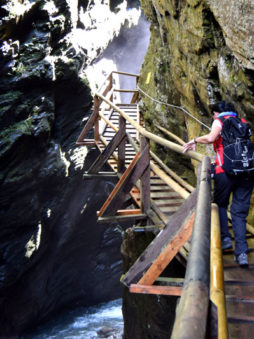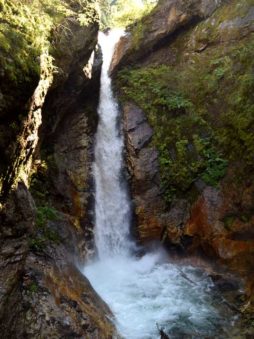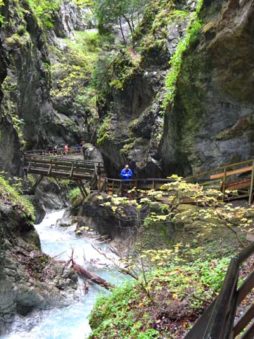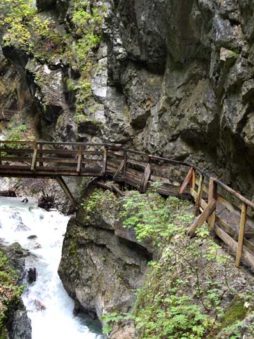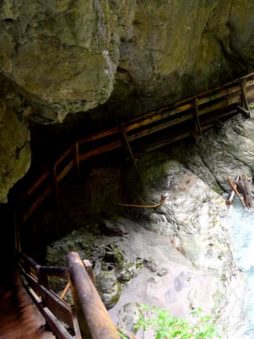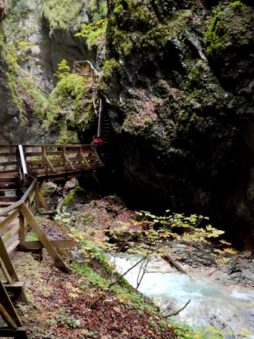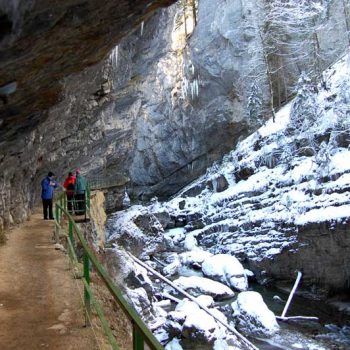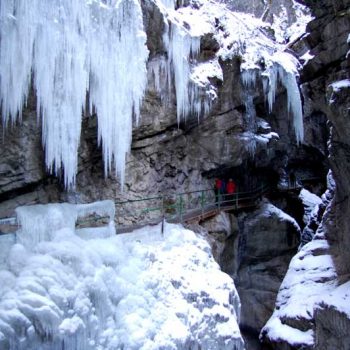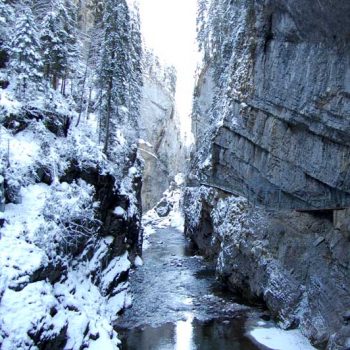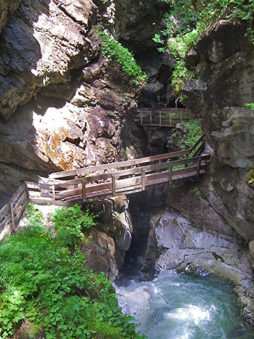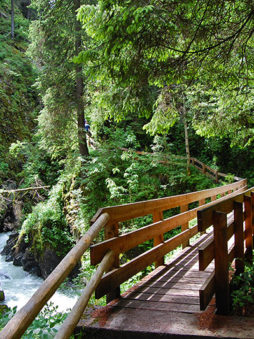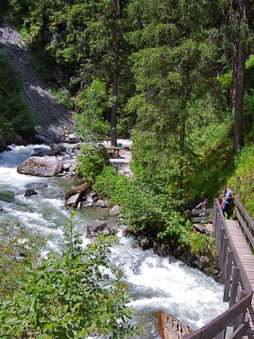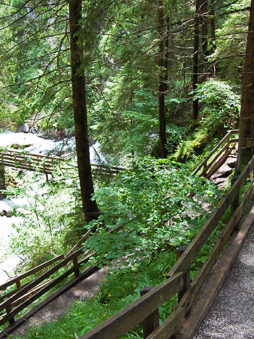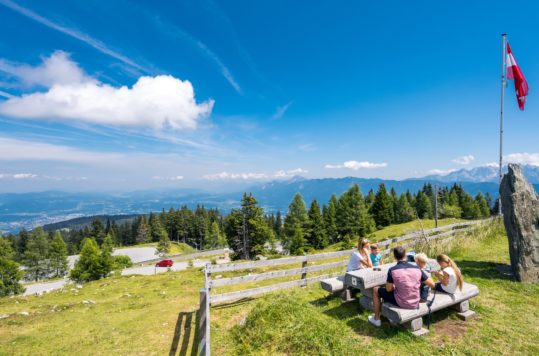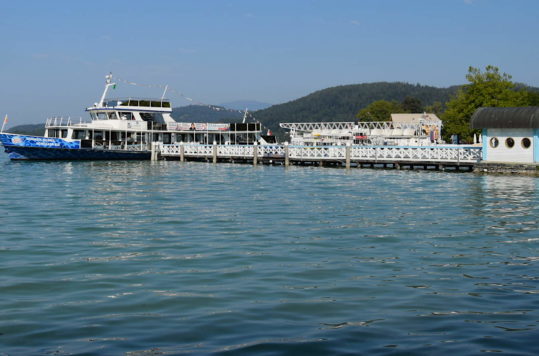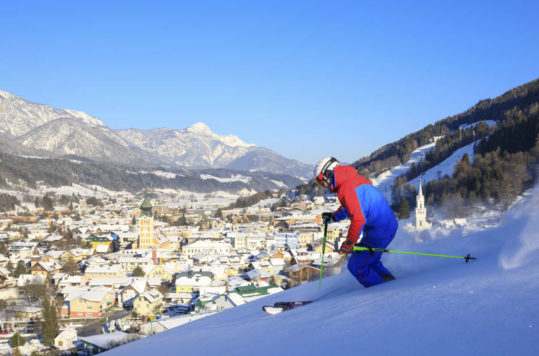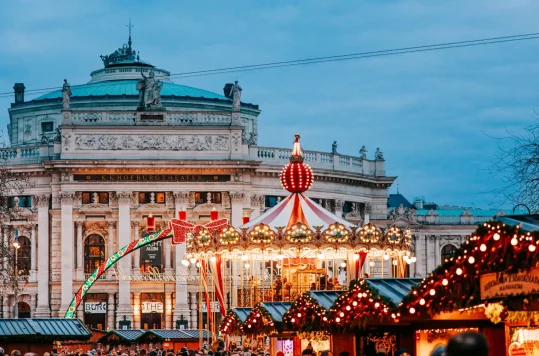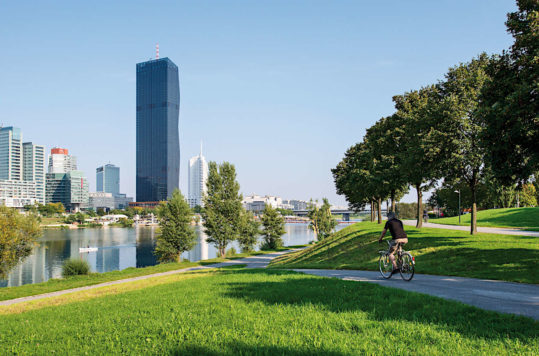The Austrian Alps are not only snow-capped peaks but also deep canyons and narrow gorges. Many of the most incredible canyons in Austria offer spectacular adventures in some real wild nature.
Most of the canyons and gorges in Austria are maintained by public or private conservation organisations, and you pay an entrance fee. The fee covers the maintenance and conservation projects in the area. Many canyons offer suitable hikes for the whole family, and only a few are best hiked by seasoned hikers. We have collected a few impressions from some canyons we visited around Austria and South Tyrol.
Kesselfallklamm (Styria)
The small Rötschbach River cascades down several waterfalls, rushes over rapids and flows through pools, making its way through the gorge. The highest waterfall cascades down several steps before culminating 38 meters below the cliff. It is just one of the highlights as we hike on more than 50 walkways and bridges, making it possible to experience the natural spectacle up close.
Where the Rötschbach River ripples quietly at the top of the gorge, the trail branches off to the right. A steep ascent leads you first to colossal rock formations through the so-called stone gate before the trail leads past a cave back down to the valley. After about 2.7 kilometres and 1.5 hours of hiking time, we are back at the start by Sandwirt restaurant. If you are ok with water temperatures of 15-18 °C in the summer, bring bathing clothes for a refreshing dip in one of the shallow pools in the canyon.
For more info: Graz Tourism
Tscheppaschlucht (Carinthia)
The Tscheppaschlucht by Ferlach, Carinthia, is a natural jewel of a canyon. Enjoy hiking a canyon with a unique natural backdrop. Moreover, there are different routes, exits, and hiking times from an estimated 2 – 4 hours. We found the path and walkways relatively easy to hike. However, some parts require that you be steady on your feet. Starting nicely initially, it becomes more strenuous as you start the 334-meter ascent up to the highest point at 983 meters above sea level. Often, you are hiking up and down the terrain.
Nonetheless, we hardly gave that a second thought as we admired and enjoyed the nature surrounding us. We chose one of the moderate hikes that end in the hamlet Windisch Bleiberg. After having a lovely lunch at the Kirchenwirt Inn, we returned to the car park by bus, which is included in the entrance fee. Another alternative would have been to head toward the Gasthof Deutscher Peter after just the Tschauko waterfalls or continue directly into the Bodental or Windisch Bleiberg. We enjoyed hiking this gorge and will also be back to test the other routes.
For more info: Tscheppaschlucht Ferlach
Raggaschlucht (Carinthia)
The 800-meter-long Raggaschlucht gorge is not among the longest in Austria, but still a spectacular experience. It starts with a path through the forest along the river to the canyon. As you pass through the gate, you walk on a wooden walkway crisscrossing the narrow gorge. It can be slippery on wet planks. Therefore, we recommend shoes with good non-slip soles. As you venture into the narrow canyon, the roar from the water that is thundering below your feet gets louder and louder.
The canyon winds its way into the terrain, and occasionally, the walkway is quite steep. Along the way, we pick up some information in German and English about how nature has created the gorge and a few geology hints. As we reach the top after about one hour, the camera is full of impressions from the fabulous hike through the Raggaschlucht. As a grand final to the hike, a forest road takes you back down into the valley through the forest, where you also get glimpses of Mölltal Valley and the mountains. It took about 1.5 hours to make the roundtrip.
For more info, Carinthia Tourism
Advertisement
Wolfsklamm (Tyrol)
For thousands of years, the Stallenbach creek has cut a deep ravine into the Karwendel mountains in Tyrol. Then the monks from the monastery of St. Georgenberg arrived at the area and laid a path from the village Stans through the gorge up to their monastery. The hike starts at the edge of the village, where you will find a car park. After a short walk, you reach the entrance to the gorge. The Wolfsklamm gorge, which owes its name to the wolves that once lived here, leads gently uphill through cliffs and steep slopes towards St. Georgenberg, the oldest pilgrimage site in Tyrol. Wooden walkways, bridges and 354 steps guide you through a fantastic natural spectacle. Nonetheless, this is a family-friendly hike, but be sure to wear proper shoes, as it can be slippery and steep.
For more info: Tourism Silberregion Karwendel
Breitachklamm (Vorarlberg)
Very few canyons are open in winter. Nonetheless, the Breitachklamm on the border between Germany and Austria offers great winter hiking. I visited the canyon during a stay in Kleinwalsertal, Austria. It had snowed a few days before, making the canyon even more beautiful. Hiking along snow-covered rocks, past ice curtains and frozen waterfalls is cool. In some places, massive stones are jammed into the narrow canyon above. Looking down into the river, you can see huge potholes carved out by the water. The top entry point is just within Austria, and you hike downwards through the canyon for about 1 hour before arriving at the lowest entry point in Germany. It’s a little steep going from the canyon and up to the parking lot in Austria, but besides that, this is an easy, safe and beautiful canyon hike.
For more info, Kleinwalsertal Tourism
Gilfenklamm (South Tyrol)
The small river Ratschingser Bach has been digging through the white marble for millions of years and created a deep gorge in the surrounding landscape – the Gilfenklamm, which has been developed into a great hiking tour. Moreover, the hike starts nicely and easily on a well-marked path as the landscape changes. Then, it gets steeper, and the gorge narrows as we trek further into the ravine. The shady, dense forest makes this a comfortable hike on a warm summer day. Eventually, we hear the rising sounds from the water rushing down the canyon. In 1896, the first walkways and bridges were built through the gorge, and it has been a popular tourist spot ever since. Although we had to hike along narrow overhangs and climb steep stairs, this should not be a problem even for children. The bridge across the canyon and the walkways alongside are secured with wires and railings. It’s a thrilling feeling to have the water cascading down the gorge just below your feet. Along the way, there are several places to rest and enjoy lunch. It takes about 1 ½ hours to make the entire round-trip. As you probably have noticed, this incredible canyon is not in Austria but in neighbouring Italy. Nonetheless, we also include destinations in the former part of Austria, South Tyrol.

